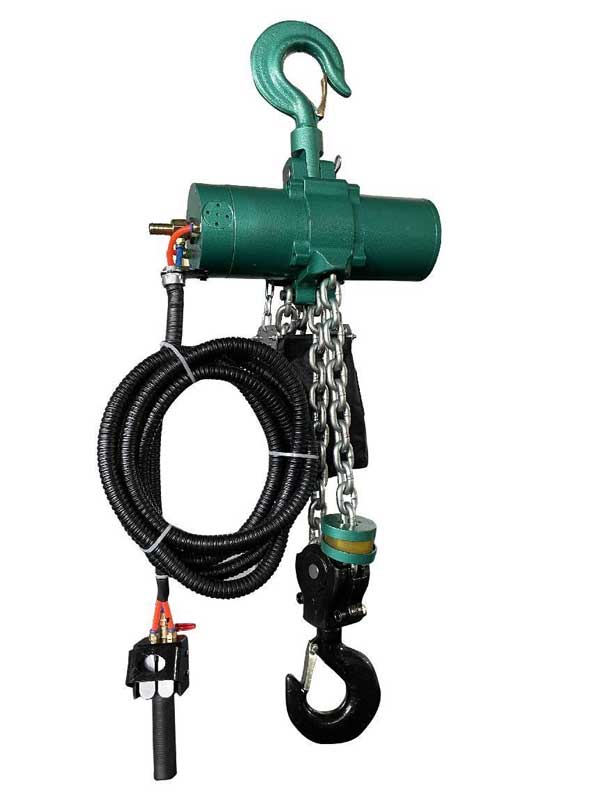Pneumatic hoists are used in a wide range of fields. Air hoists are very popular in the automobile beauty industry, the motorcycle manufacturing industry, the petroleum industry, and other industries. Because of the advantages of air hoists in safety, explosion-proof, energy savings, and environmental protection, more and more industries are willing to use pneumatic hoists instead of electric hoists. In many automation systems, the pneumatic hoist is often used for replacement.

Firstly, when we install the air hoist, we must also install the oil-level display device at the same time. Generally, the oil level display device should be installed at the air inlet of the air hoist. If the oil level display device is not installed in time when the electric hoist is installed, the service life of such an air hoist will be shortened after use.
Secondly, we must remember to install a gas protection net on the air supply part of the air hoist. After such a gas protection net is installed, it will have a better explosion-proof effect. For the installation of the above, the oil output must be controlled within the range of 5 drops per minute. If the oil output is higher than this, dripping oil will appear when the air hoist is used.
Finally, before installing the air supply pipe on the air hoist, you must remember the installation steps for gas flushing so that the garbage inside can be washed clean, and a better use effect is achieved.
During the use of the air hoist, due to normal wear and tear, improper work by workers, or the influence of other human factors, the tool may fail. Rotation: The failure of the reciprocating air hoist generally manifests as immobility, insufficient reciprocating distance, or powerlessness. Vulnerable parts of air hoists are the O-ring, piston, cylinder block, intake switch, spring, etc.
The failure of rotary tools generally manifests itself as the tool not rotating or rotating weakly. The parts that are prone to failure are:
If you have any inquiries about the air chain hoist, please contact us freely.